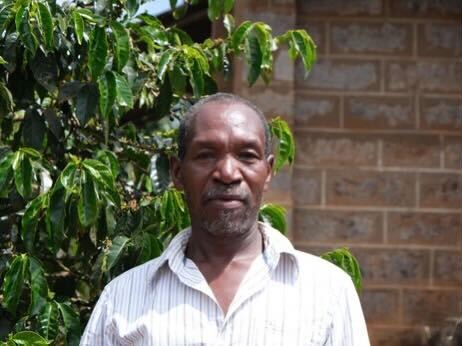
AA GITHEMBE / KENYA
AA Githembe / Kenya
Flavor Profile :
Red currant, Grapefruits, Rhubarb jam, Juicy.
Origin: Kenya
Factory : Githembe
Cooperative : Thiririka *Farmers Cooperative Society
Producers : 1500 smallholder farms Origin: Kiambu
Varieties : Batian, SL-34, Ruiru 11, SL- 28f
Process : Washed
Altitude: 1600 - 1800ml
Harvest: 2022-2023
*Indicated as FCS in the text.
In February of this year, I traveled to Kenya to visit the location where coffee is sourced and processed.AA Githembe is an exceptional coffee that boasts a luscious fruity profile, which is particularly characteristic of Kenya's coffee offerings among the numerous samples I tasted during cupping sessions. Immerse yourself in the delightful Kenyan notes of red currant and rhubarb, complemented by the invigorating essence reminiscent of a crisp bite of grapefruit.

This coffee undergoes refinement at the Githembe Coffee Factory (referred to as Githembe from here on), situated in the Kiambu region – a notable coffee-producing area just north of Nairobi, the capital city. Githembe is one of the factories managed by Thiririka FCS, while the cooperative also oversees two other facilities, namely Kiganjo and Ndhundu. The area is experiencing an increase in incidents of cherry theft, prompting the decision to centralize the coffee processing within the FCS. As a result, coffee processed at Githembe will be transported to Kiganjo for the drying phase. Thiririka FCS, which oversees the operation of these three factories, derives its name from the Thiririka River, a primary water source for the region.
The FCS encompasses approximately 2,400 registered members, encompassing a diverse group including small-scale coffee growers, cooperative board members, factory managers, and staff. Presently, around 1,500 of these members are actively engaged. All members cultivate coffee using seeds certified by Kenya's CRI (Coffee Research Institute). As a core aspect of FCS activities, we offer agronomic training and provide necessary materials to support our contributing smallholder members. Guidance on essential practices like pruning coffee trees and the effective use of fertilizers is also extended.

Kenya experiences two distinct harvest seasons: the primary crop, spanning from October to December, and the secondary "fly" crop, taking place from May to July. Our sourcing strategy exclusively focuses on the main crop. During this period, blossoms emerge between February and March, with coffee beans becoming available for purchase from January through April of the subsequent year. When we visited Kenya in late February, we found ourselves amidst the pinnacle of the buying season, which followed the culmination of the harvesting and refinement processes for the main crop.

Farmers hand-pick all ripe cherries and bring them to the factory.
Upon arrival, the cherries are spread out on sheets in the sorting shed and then manually sorted into properly ripe and unripe cherries according to factory standards. The factory has a receptionist-like staff who will be present to make sure the sorting is done correctly.
Only fully ripe cherries undergo sorting and are subsequently introduced into a machine known as a pulper. This apparatus serves the purpose of meticulously removing the outer peel that envelops the parchment. Upon emerging from the pulper, the coffee beans are encased in a protective coating called parchment. At this juncture, the parchment is enveloped in a viscous fluid comprising naturally occurring sugars and alcohols, aptly named 'mucilage'. This mucilage exerts a profound impact on the coffee's sweetness, acidity, and overall flavor profile. Parchment enveloped in mucilage is then carefully positioned within fermentation tanks and subjected to a gradual fermentation process lasting 16 to 24 hours. These tanks are intentionally devoid of water, and the fermentation takes place through the collaboration of the cherries and environmental microorganisms as they break down the mucilage. Once the fermentation process has successfully disintegrated the mucilage, the parchment is transferred to a separate tank filled with pristine water sourced from the Thiririka River. It remains submerged in this tank for a period of 16 to 18 hours.

Once the preliminary steps for drying are finalized, the coffee is transferred onto a mesh bed known as a "skin dry bed," where it's subjected to drying until reaching the desired moisture content, a process lasting around 6 hours or potentially even a day. Given that the parchment has approximately 50% moisture content from the preceding washing phase, this particular bed reduces the moisture content to approximately 20%.
Upon reaching the targeted moisture level, the coffee is subsequently moved to an elevated drying table known as an "African bed," where it undergoes gradual drying over a span of up to 21 days. During the daytime when the sun's intensity is at its peak, and also throughout the nighttime, the coffee laid out on the African bed is thoughtfully shielded by a plastic cover.

Click here for the product page.



